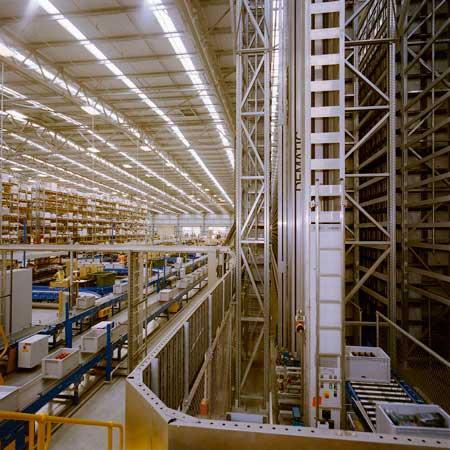In this article Dr Murray comments on the performance of storage systems during seismic events, including the recent devastating earthquakes in New Zealand.
Designing rack structures to cope with the unpredictable forces generated during an earthquake requires a combination of detailed engineering, sophisticated computer analysis, and a degree of crystal ball gazing on the part of the engineer into how the storage system may be utilised over its lifetime.
When structural engineers design a building, they can make reasonable assumptions, guided by design standards, about the likely loadings on the structure during day-to-day use. Warehouse storage systems, on the other hand, could theoretically be empty one day, and full the next. The total load, where loads are located and the height of racks all have a significant impact on the performance of a storage system during a seismic event.
What happens to storage systems during earthquakes
In non-seismic areas, storage systems are designed to support mostly vertical loads – horizontal loads typically account for only around 0.5% of the vertical loads, making them relatively insignificant. However, when an earthquake occurs, ground acceleration can increase the horizontal loadings on storage systems by a factor of 10 or more. The storage system rack frames and beams respond by swaying to and fro, and the total mass within the racks – the stored pallets – begins to move in relation to the ground, creating inertial cross-aisle (transverse) and down-aisle (longitudinal) forces within the rack structure.
The inertial forces acting in the cross-aisle direction will cause the rack to sway, increasing compression in one upright and decreasing the load on the other. The greater the horizontal seismic inertial forces acting on the storage system, the higher the compression and uplift forces will be. These uplift forces result in the racks attempting to pull the uprights’ baseplates free of the ground anchors, which secure them to the floor.
The need to accommodate seismic loads may lead to the use of bigger and stronger uprights and beams in the racking system. Alternatively, some suppliers make use of vertical and horizontal bracing to stabilise the rack in the longitudinal direction. Dematic avoids the use of down-aisle bracing whenever possible, preferring instead to opt for the use of “standard” racking uprights and beams, increased in size as necessary to accommodate the seismic loads. The use of spine bracing at the rear of rack frames can be problematic since the bracing is prone to damage when putting away and retrieving pallets, possibly reducing its effectiveness under load. Dematic also employs chemical anchors and special seismic baseplates, designed to behave in a predictable manner in the presence of uplift forces.
Dematic’s seismic design process
In recent years, Dematic has designed and implemented over a dozen major ColbyRACK pallet storage systems for a diverse range of customers in New Zealand including Progressive, Foodstuffs, Ezibuy, Brand Lines, Provet, Officemax and The Just Group, with all of the installations located in seismically active areas including Auckland, Christchurch and Palmerston North. Dematic’s storage system designs for seismic areas are proof-checked by specialist local consulting engineers. For example, in New Zealand, the storage systems follow the four-step PS1-PS4 procedure:
• Dematic structural engineering design and detailing to relevant local standards (PS1)
• An independent review of the structural engineering design and detailing (PS2)
• Installation to the relevant local standards and codes of practice (PS3)
• An independent review and certification of the installation works (PS4).
If in doubt, check it out
It has been noted in several reviews of failed racking structures that existing and unreported rack damage may have contributed to rack collapses. Rack uprights and beams can be easily damaged during forklift operations, and a regular rack inspection and repair process is highly recommended. If you have any concerns your storage systems are not up to standard, or that the structural integrity may have been compromised, it is recommended they be inspected as soon as possible by an appropriately qualified engineer.
Obviously a thorough detailed inspection of storage systems is necessary immediately following a significant seismic event. Also, should the usage of a storage system change significantly from its original design, its suitability for other purposes should also be checked and verified before proceeding.
Key inclusions in any rack audit should include:
• Any unapproved changes to the “As Built” installation drawings
• The structural integrity of any unapproved changes
• That the correct Safe Working Load signage is appropriately displayed on the relevant bays of racking
• Damage to rack uprights
• Damage to footplates and floor fixings
• The condition of any splices
• That the rack is correctly installed and is not out of vertical alignment
• The condition of horizontal and diagonal braces on rack frames
• Damage to beams
• That beam connectors and safety clips are secure, and that beams have not become dislodged
• That the welds between beams and connectors are not cracked on beams that have incurred impact damage or overloading
• Any overloading of the rack
• The use of any damaged or inappropriate pallets that could compromise safety
• Additions to the original system
• Details about how the system may have been reconfigured.
And finally, it is important buyers know what they are paying for when purchasing storage systems. Storage systems may all look similar, but their performance can vary significantly. The flood of cheap, imported and often look-a-like racks into New Zealand means that storage system buyers should insist on detailed manufacturing specifications and any necessary certification to ensure they are actually getting what they pay for, and that it is fit for purpose.
Contact: www.dematic.com.au






